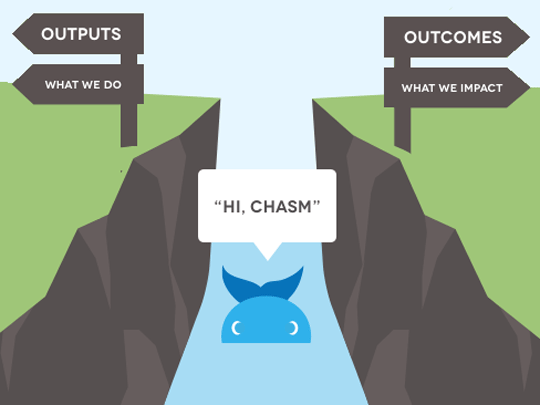The Most Important Social Media Metrics to Track
Topics

Recently, we spoke with George Weiner, Chief Whaler at Whole WhaleExit Disclaimer, about social media metrics and, more specifically, which data HIV organizations should track to measure their success. In Part II of this conversation, George answers more of our questions on:
- Integrating web and social media metrics
- Planning for mobile users
- Reporting metrics to leadership
HIV.gov: What is the relationship between web and social media metrics?
GW: As the number of platforms we communicate across increases, it’s important to focus on the people who are on the receiving end of your communications. If you were telling a story to people sitting around a campfire, you could quickly measure the number of people paying attention through eye contact. You can also carry this same concept across any digital platform by looking for the metrics that show attention over time.
Does it matter if someone spent 3 minutes with your content on MediumExit Disclaimer, YouTube, or your website? If you measure these minutes holistically across channels as impact on your audience, then success and the measurement thereof shouldn’t be limited to a particular platform.
To go back to the idea of vanity metrics, it’s great to have people following you on social media, but are they doing any more than liking your posts? Is social media driving traffic to your website? Facebook and Twitter work hard to keep people on their own sites, so even if you have a lot of followers, that doesn’t necessarily translate to more website traffic. Google Analytics can help you understand the value of your social media followers by tracking monthly and annual increases in referrals from your social media posts.
A caveat to this: Whenever we look at two different analytics platforms (such as Google Analytics and Facebook Analytics), we open ourselves up to the possibility that we’ll have datasets that don’t completely match up. If, for instance, you’re driving users to the section of your website that helps them find their nearest testing location via Facebook ads, the number of link clicks that Facebook tracks may not match up with the number of sessions driven by Facebook as logged in your Google Analytics.
This doesn’t mean we should ignore a relationship between social and website metrics, but it’s something to keep in mind as you are looking at both sets of metrics. This is especially true when you are looking at things like age and gender. Facebook provides a lot more information about user demographics because they collect that information about their users, while , Google Analytics has less of this kind of data.
Whole Whale has worked with Greater Than AIDS for over 2 years, helping them to be as effective as possible with their resources and digital advertising campaigns. We first prioritized understanding how GTA’s assets — including informational GIFs, banner ads, targeted social media posts, and inspirational videos — were received on different platforms. Knowing these data allowed us to prioritize different media platforms for allocating advertising budgets and targeting recommendations; in turn, that helped drive hundreds of thousands of users to engage with GTA’s campaigns.
HIV.gov: We know that many users access websites only via their mobile phones. Should organizations look separately at their metrics for web browsers vs. mobile users?
GW: It’s always a good idea to look at how mobile website activity compares to desktop. Lower mobile traffic or a high mobile bounce rate may both be indicators that your website isn’t optimized for the mobile experience. You can segment your users on Google Analytics between desktop and mobile (and tablet) to see if users are more likely to complete your bigger goals (email signups, donations) on mobile or desktop. And you can make adjustments to your site for usability based on what these data say.
Google offers several free tools for checking mobile usability overall, including PageSpeed InsightsExit Disclaimer and the Mobile-Friendly TestExit Disclaimer. Some big culprits that hinder mobile usability include having too many large files or images on your site or having a site that isn’t responsive to mobile design.
Big-picture web metrics, like users and sessions, should be counted together when tracking a website’s performance. In Google Analytics, user metrics show people who access your site from both their mobile device and desktop if they are logged into a Chrome browser. To that end, it’s also important to analyze cross-device journeys.
HIV.gov: What advice do you have for reporting metrics to leadership, especially for small organizations?
GW: Before you present any data to leadership, ask yourself of each number, “Nice, but so what?”
Doing this will force you to have an honest conversation about what’s necessary for reporting. Executives are driving a high-speed car down a highway: They need their dashboard to tell them miles per hour and how much gas they have left. They don’t need to be distracted with the reach of tweets on a Tuesday.
One of our favorite data analysts, Avinash KaushikExit Disclaimer, puts it best: If you’re reporting to leadership and their takeaway is “That was interesting,” you have failed in your data analysis. Your goal is to have the response be: “Here are three actions I think we should take based on those data.” That is the ultimate goal, regardless of your organizational size.